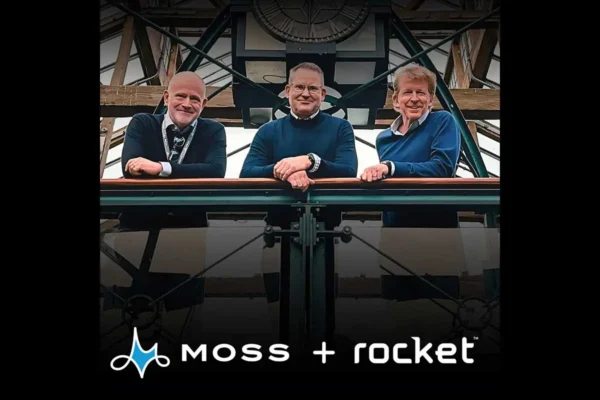 Each show provides a packet containing vital information for exhibitors. Photo credit: Hargrove, Inc.
Each show provides a packet containing vital information for exhibitors. Photo credit: Hargrove, Inc.
What is a Show Service Kit?
A show or service kit is a packet that consolidates a trade show exhibitor’s need-to-know information and order forms.
What’s Included in the Show Service Kit?
- Exhibit hall hours
- Important dates for discount rates, expedite fees, installation and cancellation
- Shipping information for show carriers, including direct and advance warehouse addresses
- Ordering forms and information for all show vendors
Managing Independent Processes
From the riggers hanging the signs to electricians laying down the wires, making a trade show happen takes a fleet of specialized skillsets. Each show and its crews have unique information, forms, requirements, processes, and deadlines that are consolidated in the show kit.
Although the information is similar, no two kits are exactly the same. “Every show manager has different information that’s important to customers, and how they want that information presented,” said Vanessa Schley, director of exhibitor services at Hargrove, Inc.
Yet systems are inherently different and disjointed, causing inefficiencies in the process and user errors as exhibitors can overlook tiny and important details. The greatest challenge – and greatest business opportunity – remains: How can we streamline the independent trade show systems?
Production Carries the Brunt
The last stop of a long trail of vendors, forms, processes, and properties is the producer. In this case, it’s the I&D company that must absorb all incoming direction and materials to erect the trade show booth.
“The onus is on I&D company that is ordering within so many different systems,” said Dana Freker Doody, vice president of communications and Strategic Client Solutions at The Expo Group. She illustrates the systemic challenge of I&D companies with an example of someone ordering shoes.
“Let’s imagine you always order your shoes from Zappos. In that case, you know the systems, access the site, and find what you need. Ordering shoes is quick and easy,” she explains as though the I&D company works with a single show. “But if you also order shoes from Nordstrom over the phone and Payless through the mail, all in the same day, then you’re going to encounter challenges in your process.” That’s the challenge I&D companies encounter when working with multiple shows. And while companies learn the processes of a repeat business partner, one I&D company might not be hired by the trade show again, as trade shows travel to different geographic locations and hire the region’s local I&D companies.
Holding onto the Paper Trail
“Not too long ago, show kits were physical manuals that were mailed and exhibitors placed orders via mail, phone, or fax,” said Schley. “Today, I have a hard time describing the kit. It’s a set of links that hold important information, instructions, and forms, but the word manual sounds outdated.”
While most kits are accessed and processed online, print remains the standard. Some kits are distributed online but remain in print-ready format and a minority of old-school exhibitors and companies still order or require a paper trail. “A paper form is universal… Here at [The Expo Group], we still keep paper in the fax machine,” said Freker Doody.
Whether to accommodate the minority or simply following an outdated yet functional system, this holds back the entire system from progressing forward towards a digital-first future. The show kit, which is the connection between association, exhibitor, and vendor, remains an outdated process that’s ripe for digital disruption.
Show Kits in the Digital Future
Most large events and trade shows now release proprietary apps for attendees. The apps are cross beneficial for both parties. Attendees can use the apps to plan their itinerary, identify and locate special interests, and receive real-time updates from the event. The show can stay in touch with its attendees as well as track their location and activities on the show floor.
While cutting edge technology surrounds the trade show world at the consumer level, the industry itself has been slow to integrate new tech within itself. Creating an app for the vendor and behind-the-scenes work appears to be a golden opportunity.
Imagine the show kit as an app that connects the general contractor, exhibitors, and vendors. Users can download and access the app from their smartphone, tablet, or desktop. The interface is designed digital-first with big buttons and bright colors that clearly guide the user-experience. Deadlines are easy to manage with a calendar feature. Plus, notifications are sent via text message or email to alert the user of upcoming due dates. Ordering is made simple with an easy-to-use and consistent interface processing all forms.
When an order is entered, the user can track its progress through the app. On move-in day, exhibitors and their hired I&D crews can track the movement of booth properties on the show floor and anticipate timing for arrival at the booth space. Riggers and set-up crews can time their work accordingly so they can get to work at the optimal time.
During the set-up process, exhibitors can communicate with their crews via the app. They might ask and answer questions, get status updates, and receive pictures of the progress.
While this appears to be easier-said-than-done, other industries are harnessing technology to gain efficiencies, and the trade show industry can no longer think small when it comes to technology. “Technology will continue to help us be more connected, speed up business, get things done,” said Freker Doody, who alludes to big picture thinking from The Expo Group. “When are we going to be able to order labor services from Alexa?”
Tips for Reading the Show Kit
Until the packet is streamlined digitally and integrated with smart devices, exhibitors must think critically and actively plan ahead when reading the show kit packet. Below are tips for analyzing the packet from Schley and Freker Doody.
How do I access the show kit? In the past, show kits were physical packets that were mailed to exhibitors and orders were placed via mail or fax. Today, most kits are accessible online with a password.
When should I start planning? Exhibitors should expect to receive the packet 90-120 days before the trade show. For the biggest discounts, start planning at least 90 days out to manage the various deadlines. Planning ahead allows for shipping coordination and managing discount deadlines, which can offer huge cost savings. “Staggered due dates are overwhelming, so show managers try to make the various deadlines close – if not the same,” said Schley. Set reminders on your calendar to manage the due dates, especially if you want big cost savings.
When should the exhibitor ship to the advance warehouse or direct to show site? To answer this question, first ask: Where is your booth coming from and when can it arrive?
The warehouse might be receiving properties for more than a month. The advanced deadline might be 3-5 days prior to install to allow the crews time to gather and deliver properties.
If the booth properties are still being built or coming from another show, then direct is likely the best option.
When reviewing the show kit, check to see if there’s a separate shipping label for hanging signs. Schley recommends shipping the hanging sign to the warehouse ahead of time because the hanging sign must be hung before the trade show booth is erected.
When should show labor start? To stay within budget, exhibitors want to set-up the booth on straight-time. If possible, ship to the advanced warehouse so that the properties are at the booth when move-in time starts.
If it’s not possible to ship to the advance warehouse, the exhibitor must ship direct to the show site. The risk is that the exhibitor does not know when booth properties will arrive to the booth space.
If shipping direct to show site, exhibitors should order labor for later in the day or the next day. A common mistake is to order labor to start at the move-in time, because properties may not have arrived yet. If the crews started at 8 a.m., they will stand around waiting for the properties to arrive. If the properties get to show floor at 11 am, the exhibitor has already incurred a huge labor cost.
What details are often overlooked? Schley recommended highlighting the site- or show-specific factors. For example, if the show floor already has carpet, you may not need to rent carpet for your booth.
Freker Doody said that electrical floor plan is most often missed in the orders because it’s the last piece that’s finished when building a new booth. Every booth outlet and electrical wire needs to be planned before the entire booth is set-up. If possible, that information should get to your crew as soon as possible.































